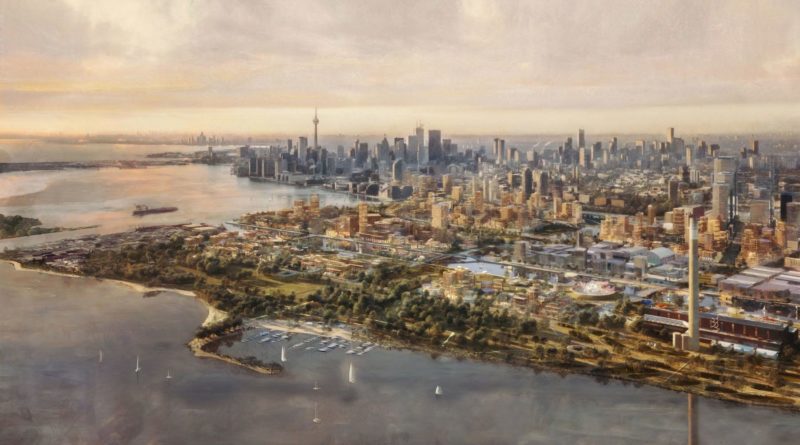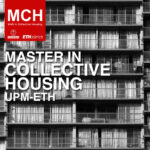Translated from its Spanish version by Nicolas Cook
The critics of Sidewalk Labs’s (Google’s real-estate subsidiary) project of creating a Smart City in Toronto tend to focus on its most “Orwellian” aspect: the unjustified large-scale collection of personal data. But few have remarked that housing in Google’s Smart City in Toronto project is tantamount to a swindle.
In 2002, the city of Toronto launched an ambitious plan (the largest in North America) to revitalise an urban waterfront area. During the 20th century this marshland area, situated at the mouth of the River Don on Lake Ontario, became a huge dumping ground for industrial waste. As such, that year, the Municipal, Regional and Federal governments together constituted the Waterfront Toronto organisation, with a generous injection of public funds to redevelop the 2000 acres of abandoned coastal terrain. Their aim was to transform the lakeside area of the biggest city in Canada: it would become a place to live, work and play, with housing for all and a vibrant, sophisticated public space worthy of any of the world’s great capital cities.
The major revitalization project got under way, and for a decade, the infrastructure development moved forward smoothly and with little attention from the media. To the outsider the visible results of rather plain apartment blocks didn’t quite seem to match up to expectations. Among the reasons causing this to be a lacklustre project were a lack of freedom from a planning perspective, and the fact that almost all of the land earmarked for construction was in private hands.
The Quayside
Yet this began to change in 2009, when Waterfront Toronto started purchasing its first plots of land nearby. This continued until it eventually owned an adjacent area amounting to 12 acres, which it named Quayside. For the first time, the public developer no longer had its hands tied, and could now plan and execute a project according to its original visionary idea.
In order to turn Quayside into a small-scale experimental city of the future, Waterfront Toronto chose Sidewalk Labs (Google’s Real estate subsidiary) as its preferred partner in mid-2017. Sidewalk Labs’s mission included designing an innovative plan for Quayside, and collaboration with funding. Yet as soon as the first proposals for “Toronto Tomorrow (the name of Google’s Smart City in Toronto) had been published, critics noted that “Big Brother” cast its shadow over every inch of the project – streets, plazas, parks and buildings full of sensors, tracking our every movement with the pretext of optimizing the city for us.
Since then, and fuelled by the Cambridge Analytica Scandal, critics of the project have focused on this Orwellian aspect of the proposed urban management, and to a lesser extent on Sidewalk Labs’s attempts to secure the intellectual property rights for inventions created thanks to the urban innovation platform that the Quayside will be. Sidewalk Labs’s attempts to extend this project’s geographical scope to the adjoining 190 acre “Port Lands” area have also been unpopular. All of this has sparked a bitter debate in Toronto and beyond, about whether to scrap the entire “Toronto Tomorrow” project. Civil-tech activists like Bianca Wylie (who some call the Jane Jacobs of our time) have led the public’s battle against Google’s plans in Toronto, and three CEOs of Waterfront Toronto have fallen by the wayside.
With a few notable exceptions like Jeniffer Keesmart, the former head of planning at Toronto City Hall, most analysts failed to spot the great housing policy trap that Sidewalk Labs buried within the 1,500 pages of its protracted, repetitive Toronto Tomorrow proposal. There is a basic premise that must be followed: 20% of the housing must be “affordable” (Canada stipulates that the cost of housing cannot exceed 30% of the gross income of its occupants). According to Keesmart, only 5% of the housing on offer would comply with this. A poor return on public land valued by Sidewalk Labs and Toronto Waterfront at CA$590 million (€385 million), and even poorer considering that on private land outside of the Quayside area less innovative developers managed to reach a 13% of affordable housing.
Small homes for an on-line world
Sidewalk Labs embellishes much of its documentation for Google’s smart city in Toronto with children playing in the streets. Yet 58% of the 6,800 accommodations it expects to build will be 1-bedroom apartments or studio flats, and only 14% have more than two bedrooms. Evidently many of the children playing in the rendered images of “Toronto Tomorrow” either don’t live in the neighbourhood, or sleep in their parents’ bedrooms.
Then the reduction of floorspace has to be factored in. If we buy everything online, automate our homes, and use Apps to shop as we consume, Google deduces that we don’t need storage space. Devoid of our unproductive wardrobes (thanks to Google and Amazon), the next step is co-living; let’s share our communal spaces with other neighbours, and save even more space. It’s like returning to the concept of living at university, except you’re 40 and have children.
The houses would be made from wood (from Ontario’s forests), produced in a factory in nearby “Port Lands” in order to lower costs (assuming that Sidewalk Labs also achieves its property development aims in that 190-acre site), and be built in no time. More cost savings. Additionally, the housing will follow the Passivhaus sustainable design concept (though they won’t be certified).
“Innovative financing”
Yet undoubtedly, the most striking aspect of the housing proposal is the innovative financing method, known as “shared equity”. The client can aspire to owning a maximum of 20% of their house – to illustrate this they give the example of a CA$600,000 apartment, where the client would pay CA$120,000 in affordable quotas of just CA$500 for 20 years. This would mean paying an additional rent for the remaining 80% of the home, amounting to CA$1,600 per month. The total: CA$2,100 per month for those 20 years, adding up to just over half a million dollars. What this means is that a family with CA$500,000 can look forward to owning a portion of a house valued at CA$120,000. Google doesn’t clarify the occupant’s rights regarding maintenance and renovation, while they are neither tenants nor own a majority of the home.
But perhaps most surprising of all is that all these savings in space and rights don’t translate into cheap housing. How better to hide a fraudulent scheme than to change the rules: Google defines “affordable housing” as anything below the average market price. Thanks to this loosening of the term’s definition, and its range of innovations in design, construction and financing, it easily beats the target, achieving 40% of its housing below market price. In reality, if we apply the original definition of affordable housing, the proposal for housing in Google’s smart city in Toronto does not offer a single affordable home for purchase, and meets only the minimum (stipulated in the tender) of 20% affordable homes for rent.
Public investment on expensive houses
Yet Sidewalk Labs recognises that it needs help in its efforts to keep costs (not prices!) down – it needs a generous contribution from public authorities. It not only requests changes to the regulations (presumably Canada’s consumer rights and housing laws will not permit all of their innovations), but also makes bold requests for public funds and terrain (probably to avoid land prices from ruining their projected profits). The public subsidies and land requested would themselves account for meeting the 20% of housing below the market prices. The rest, between Sidewalk Labs tricks and the occupants’ reduced rights, would serve to increase profit margins for the chain of property developers and construction companies, led by Google itself. Did we really need an innovative financial associate to achieve all this?
Today, after much debate in public and in private, and almost 2 years behind schedule, this is the Sidewalk Labs’s plan for housing in Google’s smart city in Toronto that is on the table. The board at Waterfront Toronto and the municipal, regional and federal administrations have until 20th May 2020 to take a decision, although the coronavirus outbreak has meant an indefinite postponement. Maybe this unexpected pause for thought will give time to ponder over the small print of Sidewalk Labs’s dense Quayside proposal more carefully.
This article is published under a Creative Commons license. Some rights reserved.



















